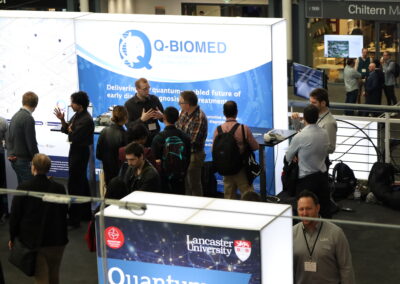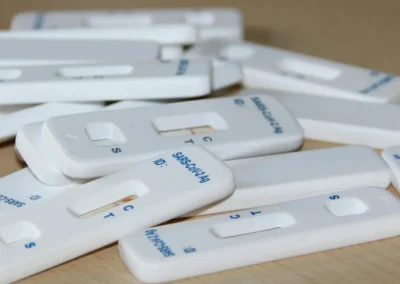LCN scientists have demonstrated a new hybrid system that is a promising candidate as a building block for quantum computation, showing a way to couple a natural phosphorus atom with an artificial atom called a quantum dot. The research, published recently in the journal Physical Review X, is a first step to using the new ‘hybrid’ system as a way to transport quantum information, encoded in the form of the fundamental property of an electron called its spin, over larger distances. The work was carried out in collaboration with researchers at Cambridge, France and Australia.
The appeal of the hybrid quantum bit, or qubit, lies in the fact that it combines the advantages of two systems. The natural phosphorus atom has a nuclear and an electron spin that have been shown to store quantum information for a very long time. However, detecting and controlling these spins, as well as placing them with precision, is not straightforward. The quantum dot, on the other hand, is more readily engineered and versatile, and can be controlled with electric voltages. The study shows, for the first time, a coupling between the spins of these two systems. This hybrid qubit is also of fundamental scientific interest being a combination of a natural atom and an artificial atom (the quantum dot).
Using a state-of-the-art technique called RF-reflectometry, which probes the state of a system directly without external charge sensors, the researchers irradiated the sample with microwaves to drive it from one state to another. They also showed that the system achieved a state called spin blockade, where the spin state of one electron influences the other. The observation of such an effect brings us closer to creating chains of coupled quantum spins, which could be used to make quantum buses, and quantum registers.
These results are all the more important as they were observed in an electronic device made in an industrial microfabrication-compatible facility (situated in Grenoble, France). Silicon is a favoured material for making a scalable quantum computer, being the building block of the microelectronics industry. This study shows that industry-standard processes can now routinely make devices, which are small enough to show quantum dot behaviour and be used for quantum computation, bringing us, closer to a practical blueprint for a quantum computer.
This work was supported by EPSRC, ARC, the TOLOP and UNDEDD projects and the Royal Society.
The full text article; ”Charge Dynamics and Spin Blockade in a Hybrid Double Quantum Dot in Silicon” can be accessed at the American Physical Society’s journal Physical Review X.



